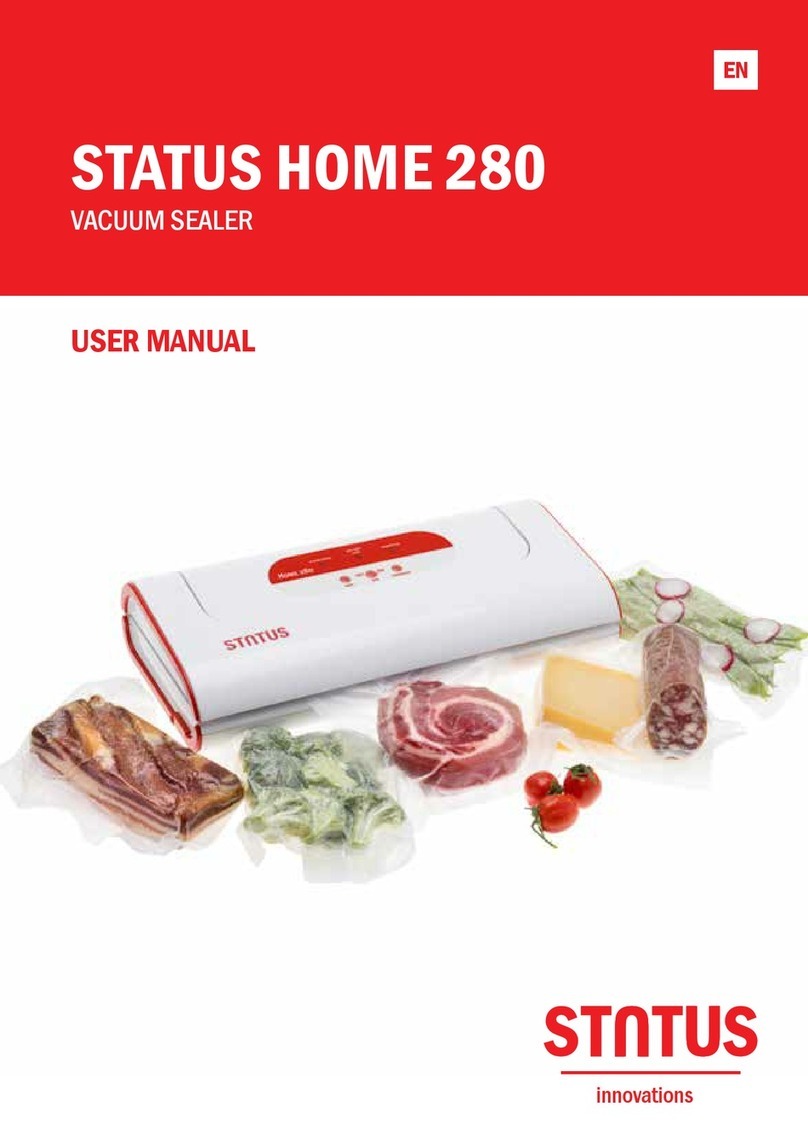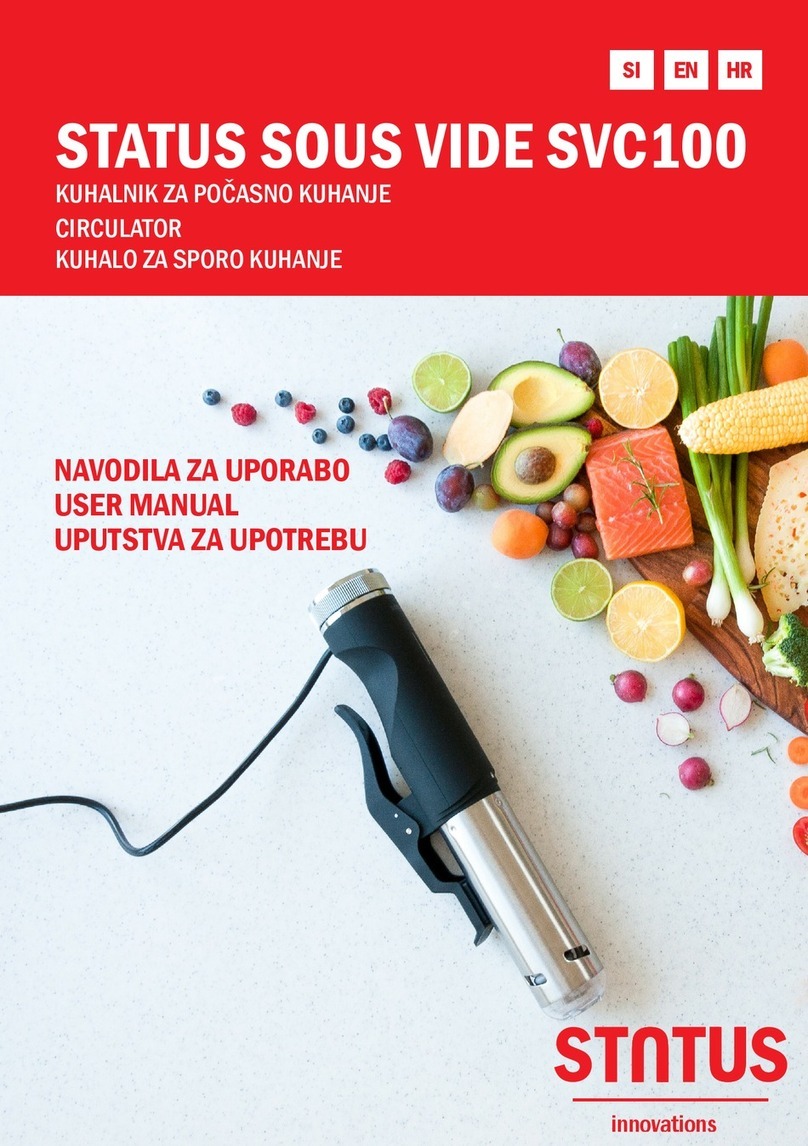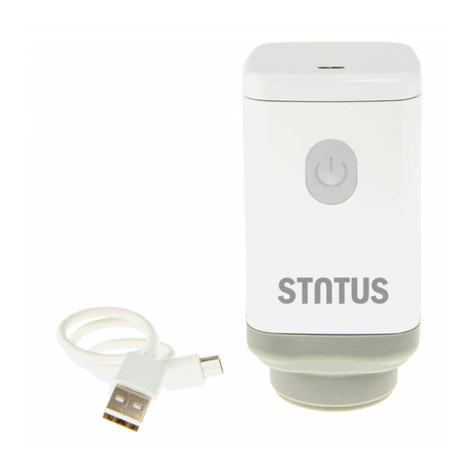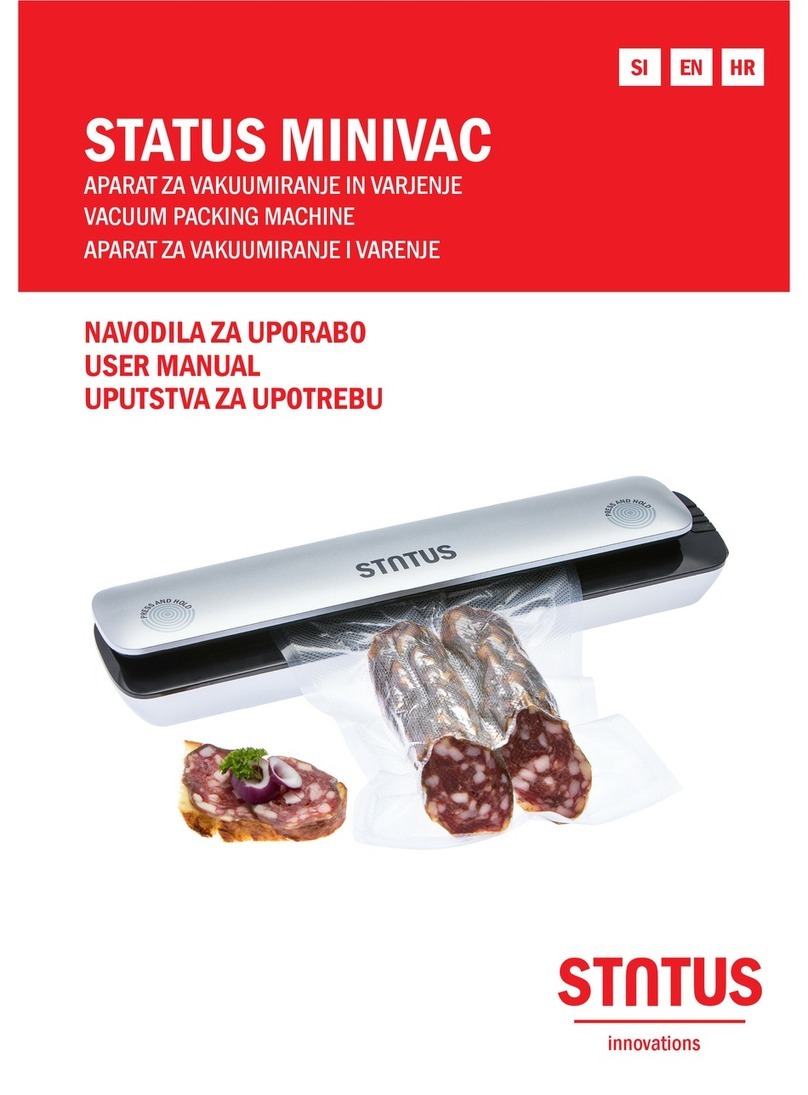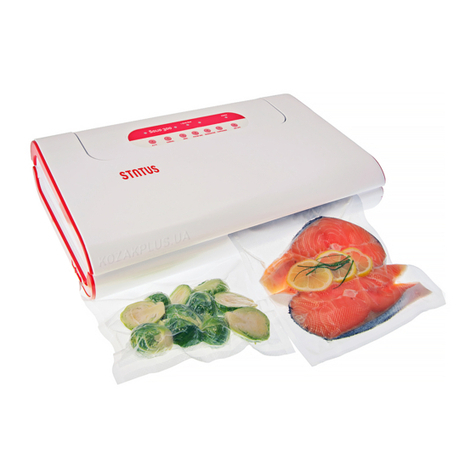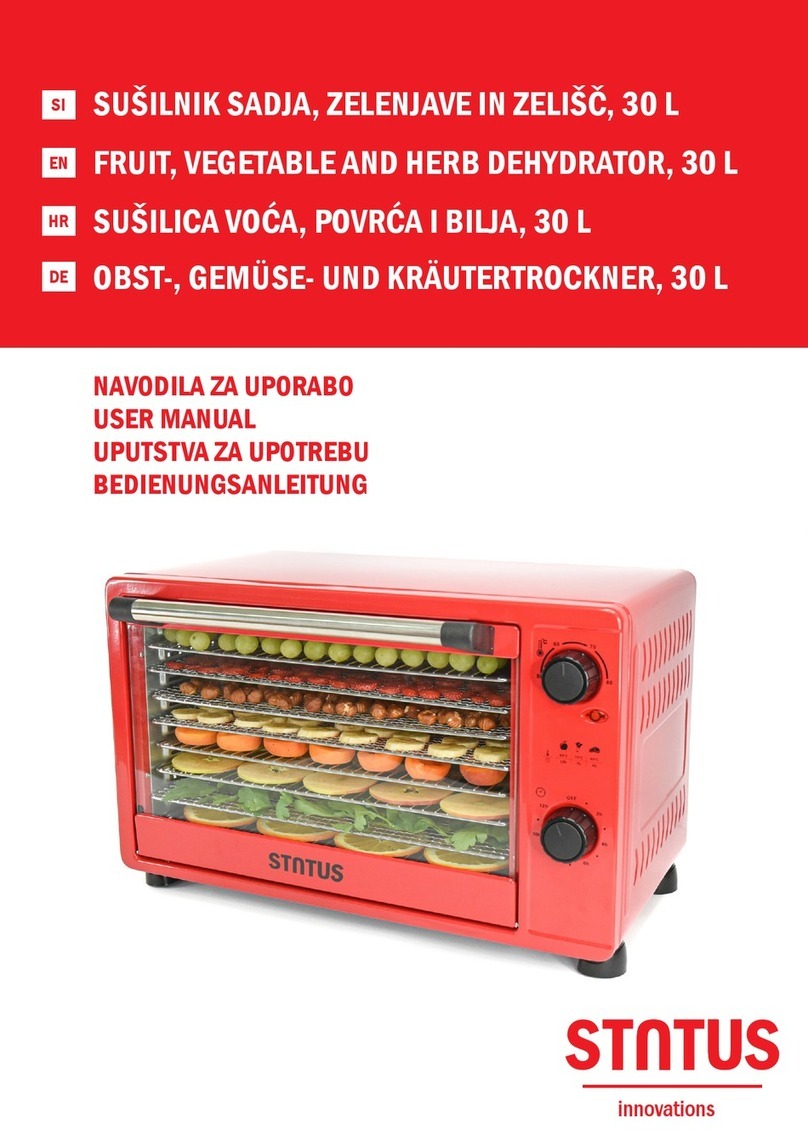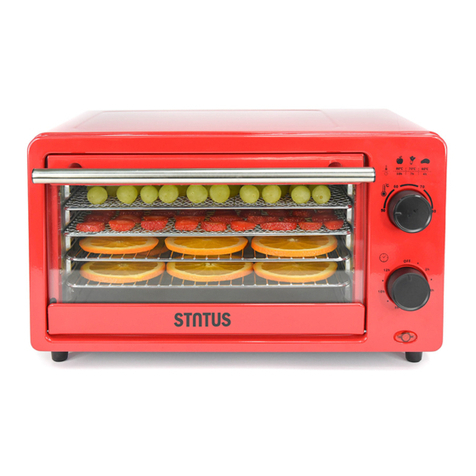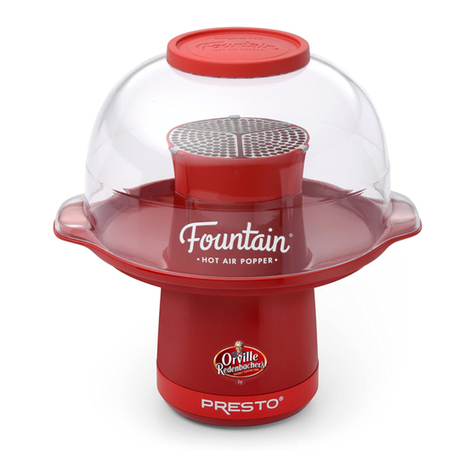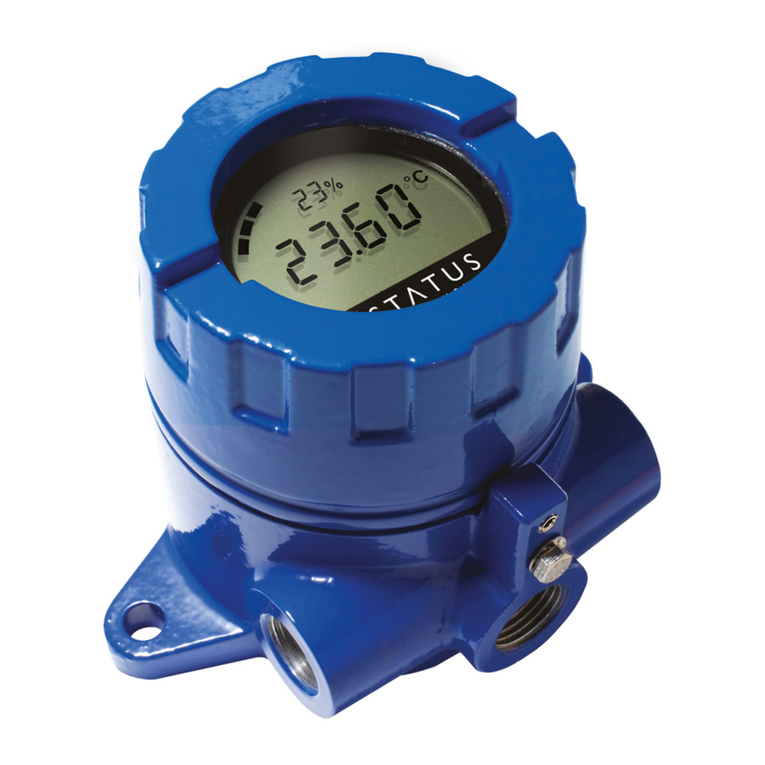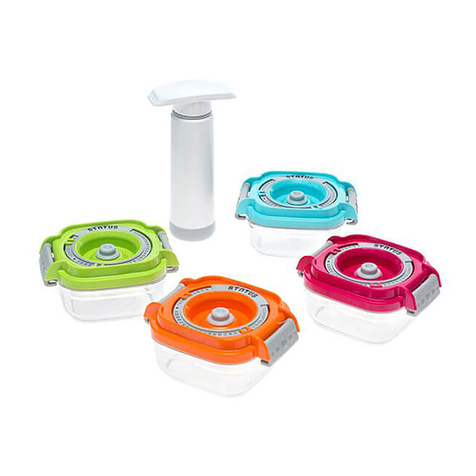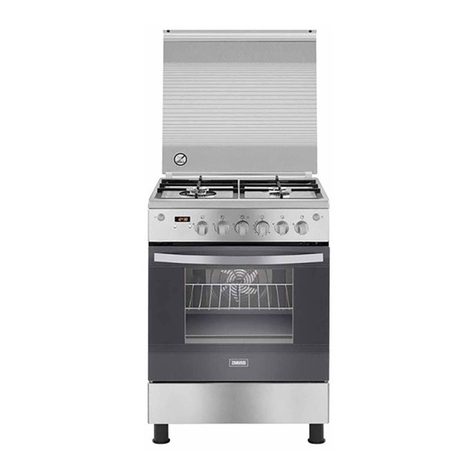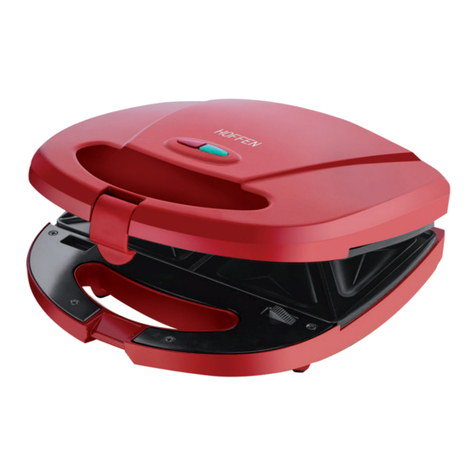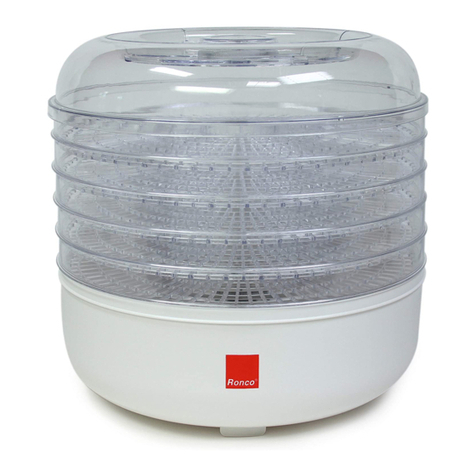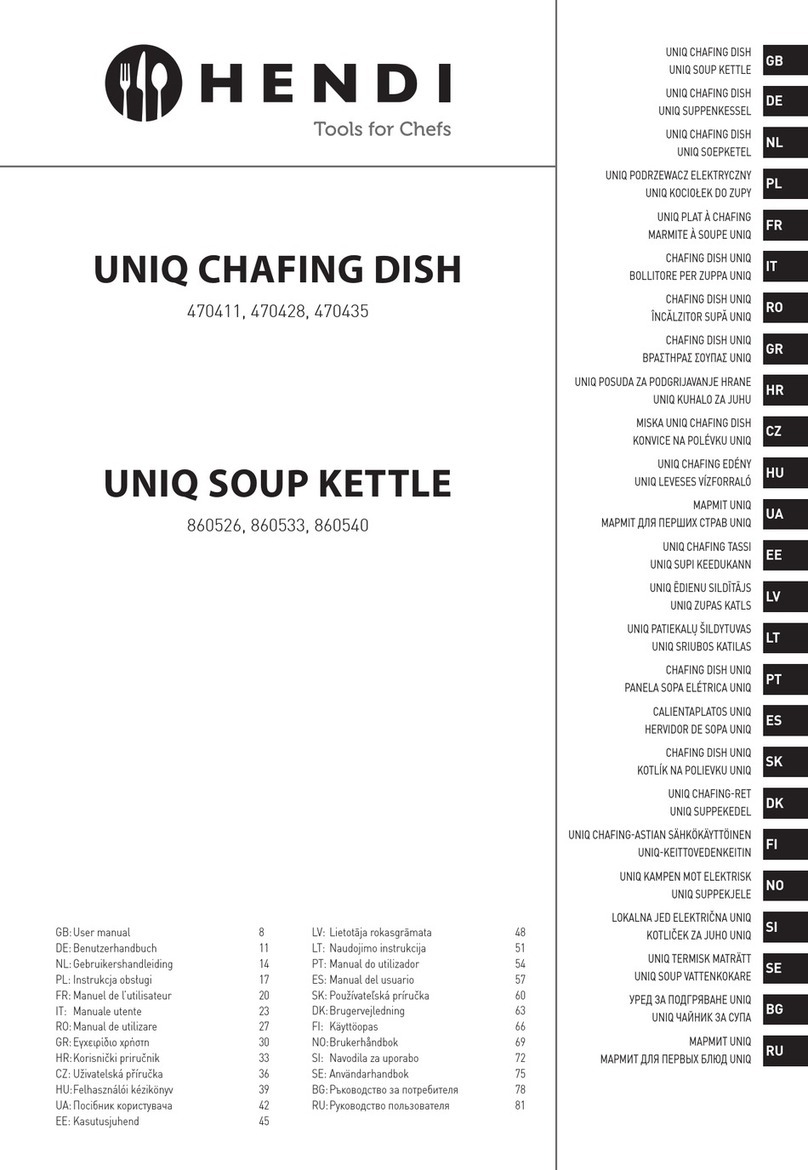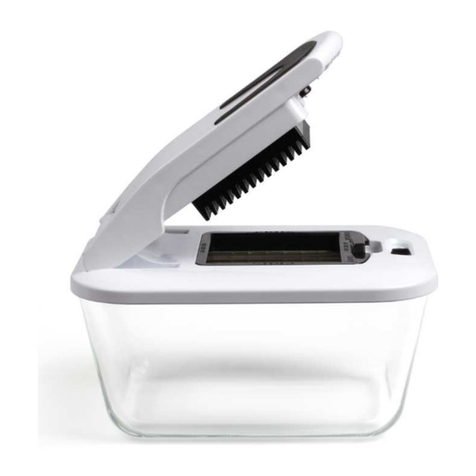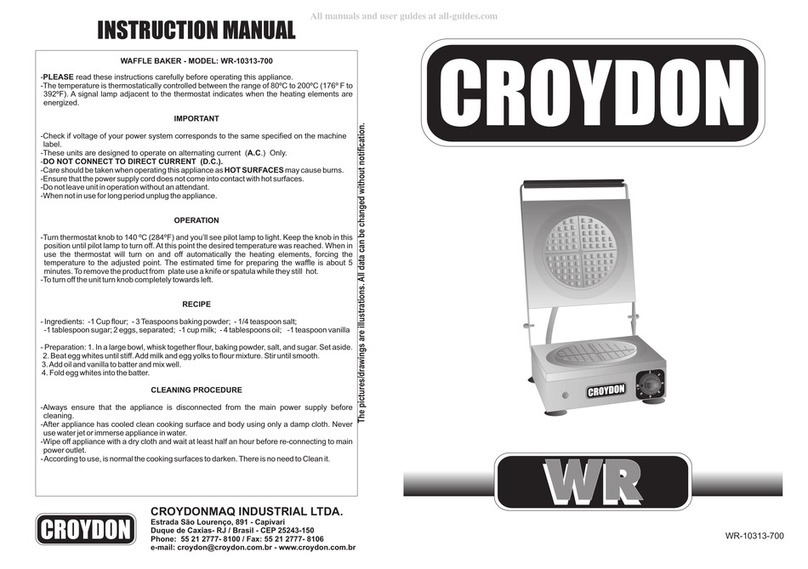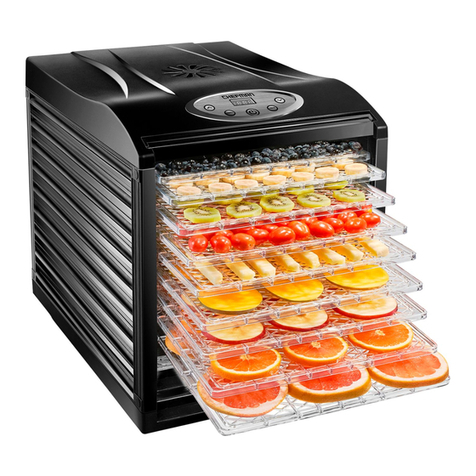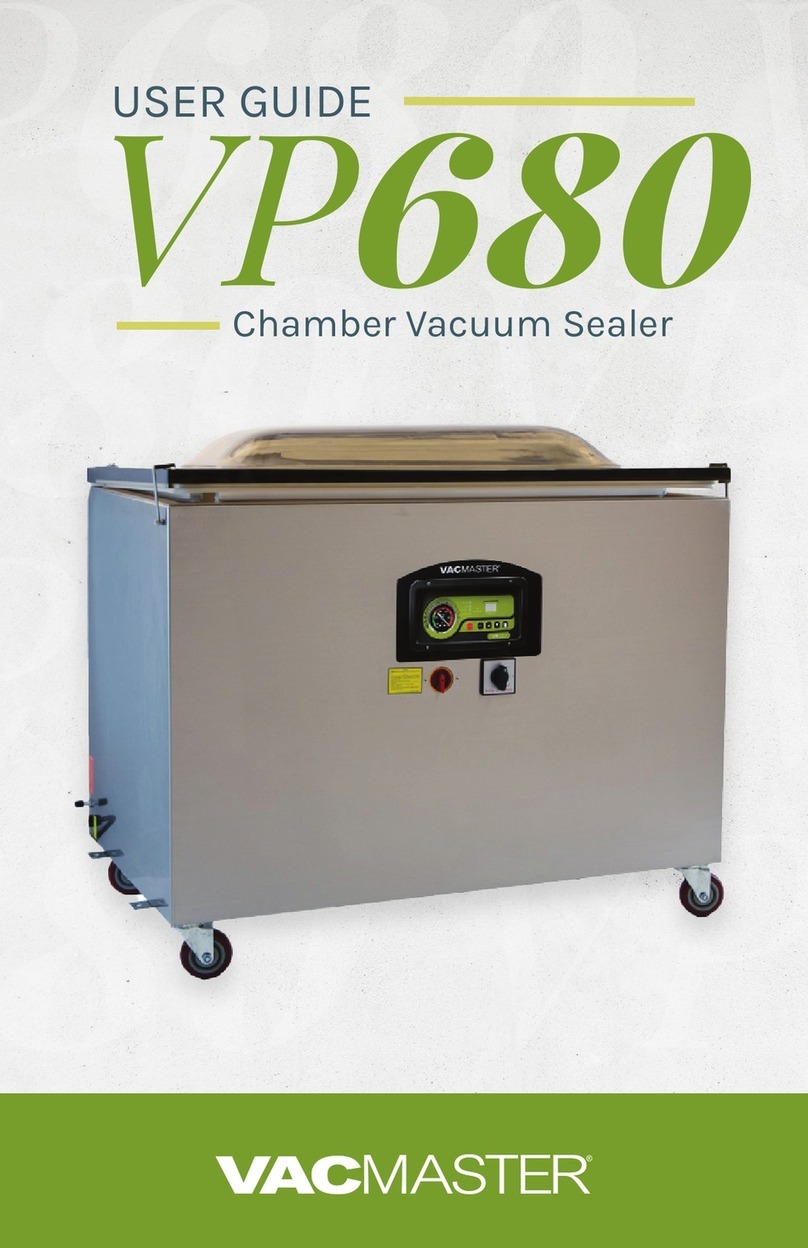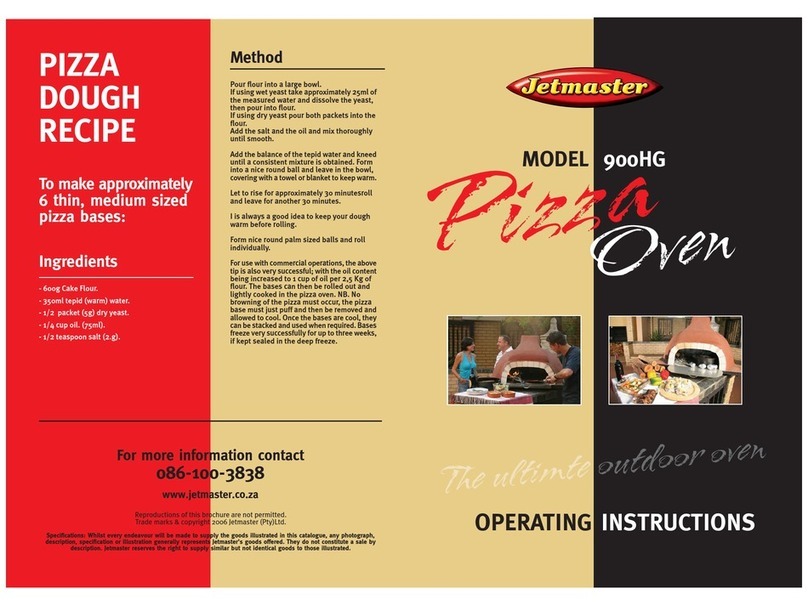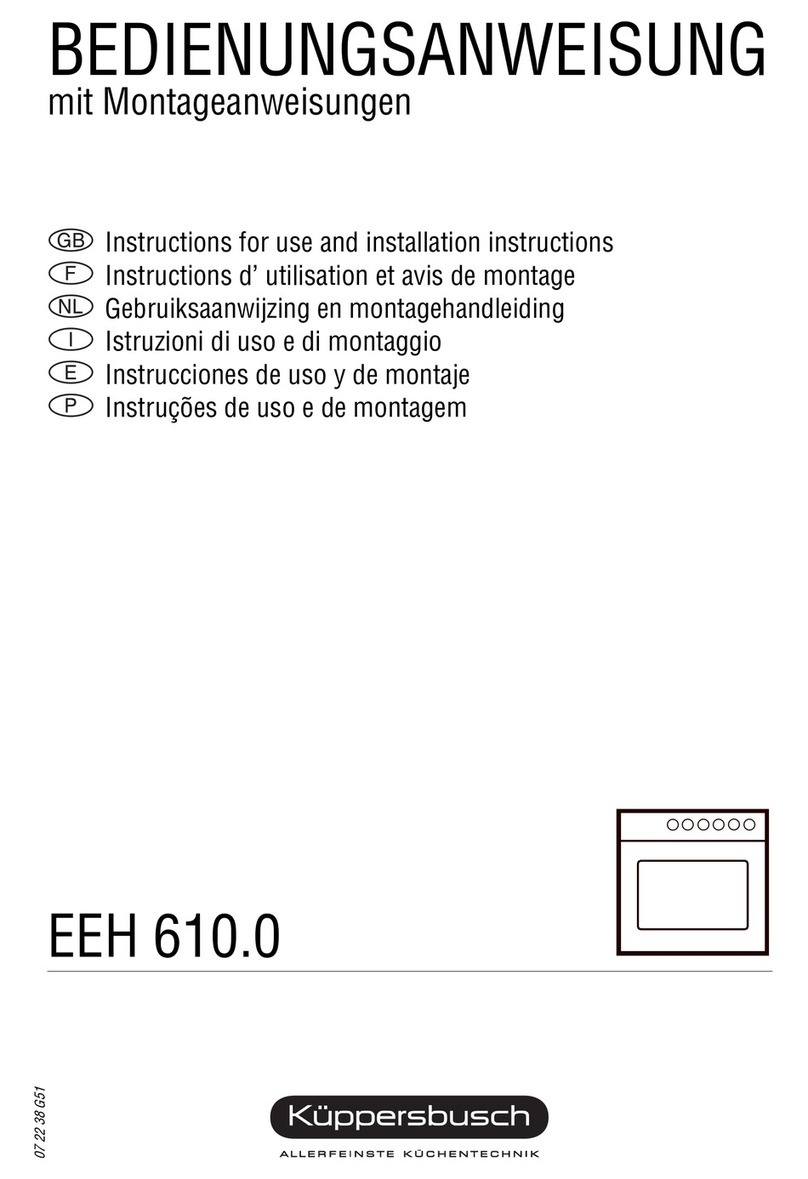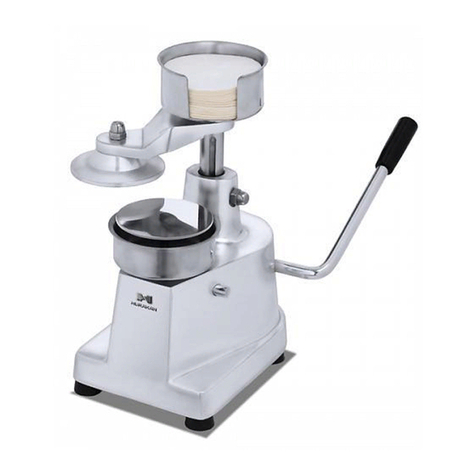
9
to be sealed free of grease.
WARNING: If the machine starts sucking liquid when
an item is vacuum packed, interrupt the process im-
mediately by pressing the Stop button (Item 2 in Figure
1). Stop button works only when the machine is in the
process of vacuum packing. When sealing, Stop button
does not work anymore.
2.2.4.
VACUUM PACKING
OF FOODS WHICH
ARE EASILY CRUSHED
When vacuum packing foods which are easily crushed
or contain a lot of water (fresh fruit, salads, mushrooms,
bread, pastry) less vacuum should be used (from 0 to
-300 mbar).
With manual vacuum packing you can interrupt the pro-
cess of removing air as soon as you assess that enough
air has been sucked out of the bag or that further remo-
val of air could damage foods which are easily crushed.
The process of manual vacuum packing is very similar
to the above described automatic vacuum packing only
with two main differences. Keep in mind that with soft
and moist foods you have to pay extra attention to what
is happening in the bag during vacuum packing.
a.) Place the items to be vacuum packed in the bag.
b.) Make sure that inner surfaces to be sealed are cle-
an, dry and free from food materials
c.) Placethelledbagontheworksurfaceinfrontof
the appliance and pull it to the middle of Vacuum
Channel (Item 7 in Figure 1).
d.) Make sure that the bag placed on the Sealing Strip
is completely smooth (not creased).
e.) Close the lid and secure it with side locks (Items 9
and 10 in Figure 1): press on one of the lid edges
and push the lock horizontally to set it in the allotted
space(seetheguresbelow).
Figure 4: Lock the appliance: press on the lid edges
(simultaneously or individually) and push side locks
inwards.
2.2.3.
WHEN THE BAG IS
MADE, PLACE FOOD
IN IT AND VACUUM PACK
The bag should be at least 5 cm longer than the space,
occupied by the item to be vacuum packed.
a.) Place the items to be vacuum packed in the bag.
b.) Make sure that inner surfaces (for the sealing edge)
are clean, dry and free from food materials.*
c.)Placethelledbagontheworksurfaceinfrontof
the appliance and pull it to the middle of the Va-
cuum Channel (see Figure 3 and Item 7 in Figure 1).
Figure 3: Place the lled bag in the middle of the Va-
cuum Channel (see arrows).
d.) Make sure that the bag placed on the Sealing Strip
is completely smooth (not creased).
e.) Close the appliance and activate the Vacuum
Packing of Bags button (Item 2 in Figure 1).
f.) Press on the lid and hold it down until indicator li-
ght begins to shine with its full power. The bag will
be vacuum packed and sealed automatically. Due
to high vacuum pressure the lid stays closed while
the machine operates. If the lid opens during this
processthenpresstheliddownrmly.
g.) When the sealing process is complete, wait for the lid
to release automatically and remove the bag. Check
the seal - it should be smooth and transparent over
its whole width.
*RECOMMENDATION: When vacuum packing greasy
products (especially bacon) it is strongly recommended
to reverse the outside edges of bag, put the item inside
and reverse the edges back again. This keeps the area
